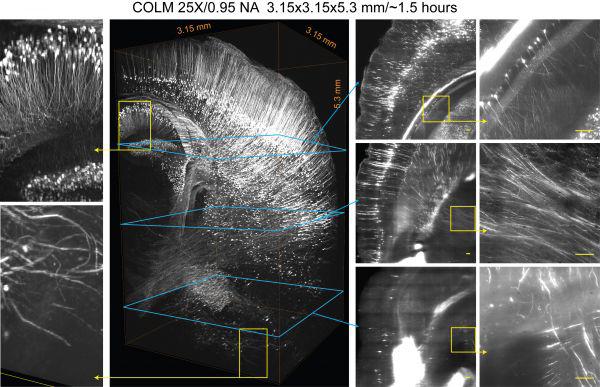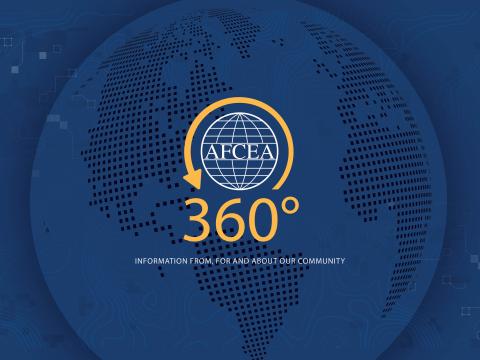DARPA-Funded Research Offers Faster, Better Views of Entire Brain
This is your brain on DARPA. Sort of.
While the latest in brain research technology, sponsored by the Defense Advanced Research Projects Agency (DARPA), might not be as catchy as the televised iconic anti-drug public service announcement from 1987 (in which an actor displays an egg to symbolize a brain, then cracks it into a frying pan to illustrate a brain on drugs) the field work could revolutionize how brains are studied in the future.
A new research protocol developed at Stanford University in California improves on their previous technological breakthrough and lets neuroscientists visualize a brain across multiple scales, says program manager Dr. Justin Sanchez.
Stanford scientists earlier developed a method called Clear, Lipid-exchanged, Acrylamide-hybridized Rigid, Imaging/immunostaining compatible, Tissue hydrogel (CLARITY) to study brain tissue. The method uses a chemical to transform intact biological tissues into a hydrogel hybrid, which makes the brain tissues transparent.
“Brains are not clear to begin with, therefore if you’re trying to use, let’s say, a microscope to study the volume of tissue of the brain, the light can’t transverse through all of the structure,” Sanchez explains. “However, if you do ‘clarify’ it using this very novel technique, then you are able to get through a volume of tissue and study all of the circuitry.”
Under the CLARITY protocol, Sanchez says, it could take upwards of 80 years to conduct the imaging process for a complete human brain. But the new protocol accelerates the process so that the same technique now takes 220 days.
“That’s a huge achievement, going from 80 years to 200 days,” says Sanchez, the program manager for DARPA’S Biological Technologies Office since 2013. “The [new] process involves placing the postmortem brain in a clearing chamber that applies an electric potential to the brain and allows the lipids, or the fats, to be removed. A hydrogel monomer is also used to crystallize the structure of the brain.”
With the brain now transparent, two sheets of light are created on opposite sides, and using scanners and lenses, the brain can be imaged. Additionally, while the new protocol still uses the hydrogel, the process reduces the risk of damaging brain tissue, which is donated.
The technology advancement is part of DARPA’s Neuro Function, Activity, Structure and Technology (Neuro-FAST) effort, which pursues innovative neurotechnology by combining data processing, mathematical modeling and novel interfaces. DARPA budgeted $30 million over four years for Neuro-FAST, part of the Brain Research Through Advancing Innovating Neurotechnologies (BRAIN) initiative launched by the White House in 2013 to understand the human brain and uncover ways to treat, prevent and cure brain disorders like Alzheimer’s, schizophrenia, autism, epilepsy and traumatic brain injury.
The initiative invests $110 million for scientific research to three federal agencies: $50 million to DARPA, $40 million to the National Institutes of Health and $20 million National Science Foundation. The BRAIN initiative goals include programs that try to understand Parkinson’s disease and developing solutions to prevent, treat and even reverse post-traumatic stress disorder and traumatic brain injury, such as those suffered by service members and veterans.
“Typically when somebody tries to study the brain, you have only structure or activity or behavior. What’s really unique about the Neuro-FAST program is that we hope to change those ‘or’ statements into ‘and’ statements so that we have a more comprehensive understanding of all of these components of the brain,” says Sanchez, a former associate professor of biomedical engineering and neuroscience at the University of Miami and a faculty member of the Miami Project to Cure Paralysis. He has published more than 75 peer-reviewed papers, holds seven patents in neuroprosthetic design and wrote a book on the design of brain-machine interfaces, according to his online biography.
Researchers want to gain unprecedented visualization and decoding of brain activity, which could enable physicians, surgeons and psychologists to not only better understand how the brain works, but how it works if attacked by disease or following a traumatic injury, and then understand how it heals. “For as long as neuroscience has existed as a field, researchers have been limited in their ability to understand the total brain because they haven’t had the tools to measure all the critical details of neural circuits,” Sanchez says. “DARPA is working to build out the neurotechnological toolkit to speed the rate of discovery and innovation.”
“Typically, people study very small sections of the brain, but in the future, we would like to understand the brain in its entirety, and if you cannot get through all of that tissue in a very expedited way, you’ll never be able to put the pieces together,” he continues. “By developing a deeper and more comprehensive understanding of brain circuits, we’ll be able to understand what happens to brain in the case of injury or recovering from injury. We think there is a long-term potential of this fundamental, scientific approach for studying the brain.
“We really think this is going to ultimately change how we all study the brain in the future.”






Comments